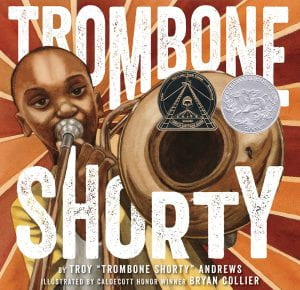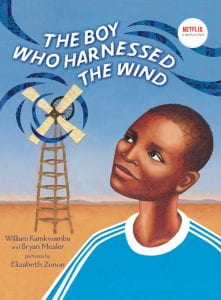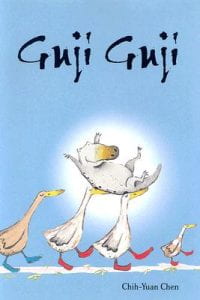All lessons align to Grade-Level ELA Standards.
Lessons at a Glance
Grade 4 • Trombone Shorty
Create a musical instrument for Trombone Shorty and his friends.
Grade 4 • The Boy Who Harnessed The Wind
Design and build a device that uses renewable resources (water, wind or sunlight) to perform a task that accomplishes a goal.
Grade 4 • Guji Guji
Can you help Mother Duck persuade Guji Guji that the ducks have ways to keep safe from the hungry crocodiles?
Grade 4 • A Storm Called Katrina
Evaluate solutions and choose the best way to reduce the impact of the next hurricane.
Full Lessons
Grade 4 • A Storm Called Katrina
A Storm Called Katrina
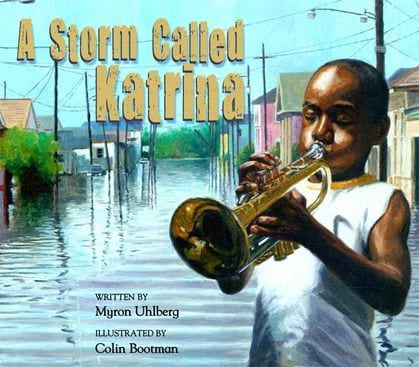
Lesson Summary
Louis and his family have to flee their home when Hurricane Katrina hits New Orleans and the levees break. Scientists and engineers are working to develop creative ways to prevent this type of damage and destruction from happening again during future storms. But which is the best option for Louis?
Can you choose the best way to reduce the impact of the next hurricane on his neighborhood?
Science, Technology & Engineering
4-ESS3-2. Evaluate different solutions to reduce the impacts of a natural event such as an earthquake, blizzard, or flood on humans.
ELA Standards
4-ELA-RL-Key Ideas and Details 1. Refer to details and examples in a text when explaining what the text states explicitly and when drawing inferences from the text.
4-ELA-RL-Key Ideas and Details 3. Describe in depth a character, setting, or event in a story or drama, drawing on specific details in the text.
4-ELA-RI-Key Ideas and Details 1. Refer to details and examples in a text when explaining what the text states explicitly and when drawing inferences from the text.
4-ELA-RI-Key Ideas and Details 3. Explain events, procedures, ideas, or concepts in a historical, scientific, mathematical, or technical text, including what happened and why, based on specific information in the text.
Video
A Storm Called Katrina by Myron Uhlberg
Grade 4 • Guji Guji
Guji Guji
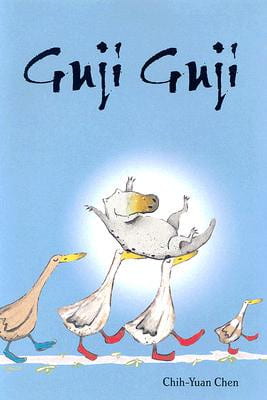
Lesson Summary
Raised by Mother Duck after his egg accidentally rolls into her nest, Guji Guji grows up thinking he’s a duck. One day he encounters three crocodiles who point out all the body parts that make him a crocodile. The crocodiles argue that as a fellow crocodile, Guji Guji should help them catch and eat his own family. Guji Guji feels terrible!
Can you help Mother Duck persuade Guji Guji that the ducks have ways to keep safe from the hungry crocodiles?
STE or Math Standards
Science, Technology & Engineering, Grade 4 Life Science, LS1. From Molecules to Organisms: Structures and Processes
- 4-LS1-1. Construct an argument that animals and plants have internal and external structures that support their survival, growth, behavior, and reproduction.
ELA Standards
Massachusetts English Language Arts, Writing Standards
- Grade 4, Reading Standards for Informational Text
3. Explain events, procedures, ideas, or concepts in a historical, scientific, mathematical, or technical text, including what happened and why, based on specific information in the text.
- Grade 4, Text Types & Purposes
2. Write informative/explanatory texts to examine a topic and convey ideas and information clearly.
a. Introduce a topic clearly and group related information in paragraphs and sections; include text features (e.g., headings), illustrations, and multimedia when useful to aiding comprehension.
b. Develop the topic with facts, definitions, concrete details, quotations, or other information and examples related to the topic.
c. Use precise language and domain-specific vocabulary to inform about or explain the topic.
Video
Guji Guji read by Robert Guillaume
Grade 4 • Trombone Shorty
Trombone Shorty
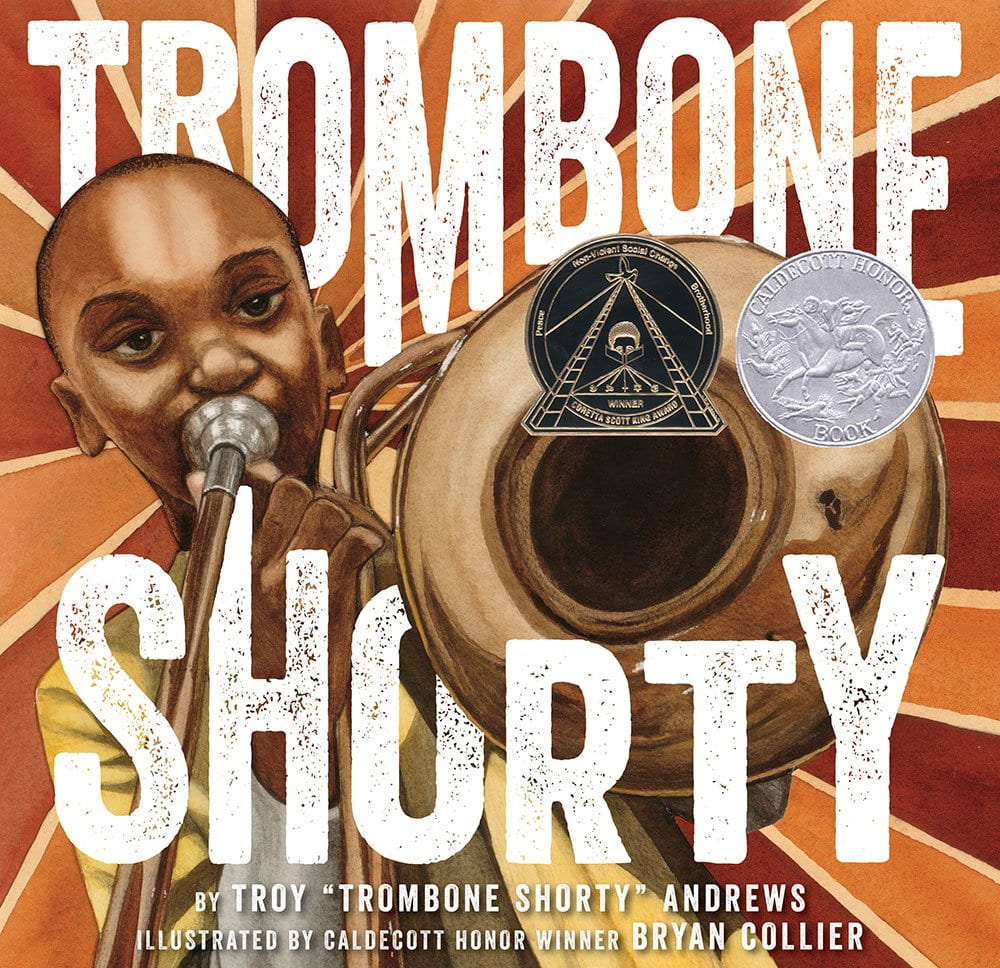
Lesson Summary
This is a story about music and how family support and encouragement helped a young musician find his passion. The students will experience jazz music and discover how people make sound or music through instruments.
After listening to the story, students are challenged to use their knowledge of energy transfer to create a musical instrument for Trombone Shorty and his friends. The instrument should use stored energy to create the energy of motion and ultimately sound that can be heard from a distance of 12 feet.
STE or Math Standards
- Energy:
4-PS3-2. Make observations to show that energy can be transferred from place to place by sound, light, heat, and electric currents.4-PS3-4. Apply scientific principles of energy and motion to test and refine a device that converts kinetic energy to electrical energy or uses stored energy to cause motion or produce light or sound.
ELA Standards
- Presentation of Knowledge and Ideas: CCSS.ELA-LITERACY.SL.4.4
Report on a topic or text, tell a story, or recount an experience in an organized manner, using appropriate facts and relevant, descriptive details to support main ideas or themes; speak clearly at an understandable pace.
Video
Trombone Shorty read by Angela Bassett
Grade 4 • The Boy Who Harnessed The Wind
The Boy Who Harnessed The Wind
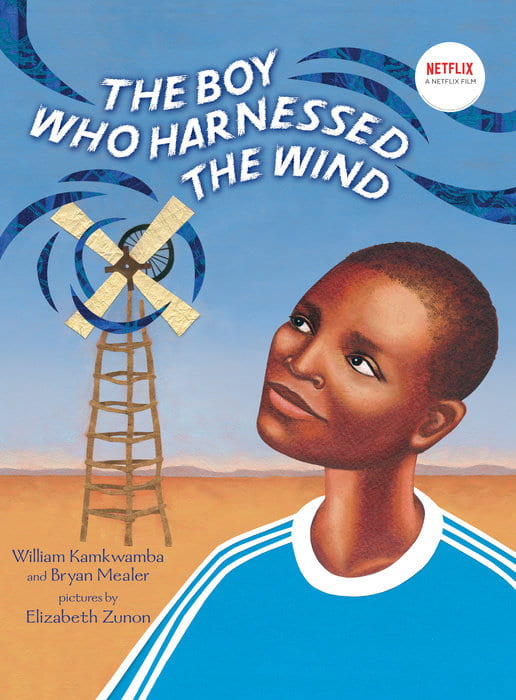
Lesson Summary
A 13 year old boy, William, was unable to attend school during a famine in Malawi. He used books borrowed from the public library to learn about how things worked. He used his new found knowledge to design and build a windmill to create electricity and pump much needed water to the farm.
William used his knowledge to solve a problem! You can too! Use your knowledge of natural resources to design and build a device that uses renewable resources (water, wind or sunlight) to perform a task that accomplishes a goal.
Science or Math Standards
- Earth and Human Activity:
4-ESS3-1. Obtain information to describe that energy and fuels humans use are derived from natural resources and that some energy and fuel sources are renewable and some are not. Clarification Statements: • Examples of renewable energy resources could include wind energy, water behind dams, tides, and sunlight.
ELA Standards
-
Vocabulary Acquisition and Use:
L.4.5. Demonstrate understanding of figurative language, word relationships, and nuances in word meanings.
L.4.5.a. Explain the meaning of simple similes and metaphors in context. (i.e. as pretty as)
Video
The Boy Who Harnessed The Wind

